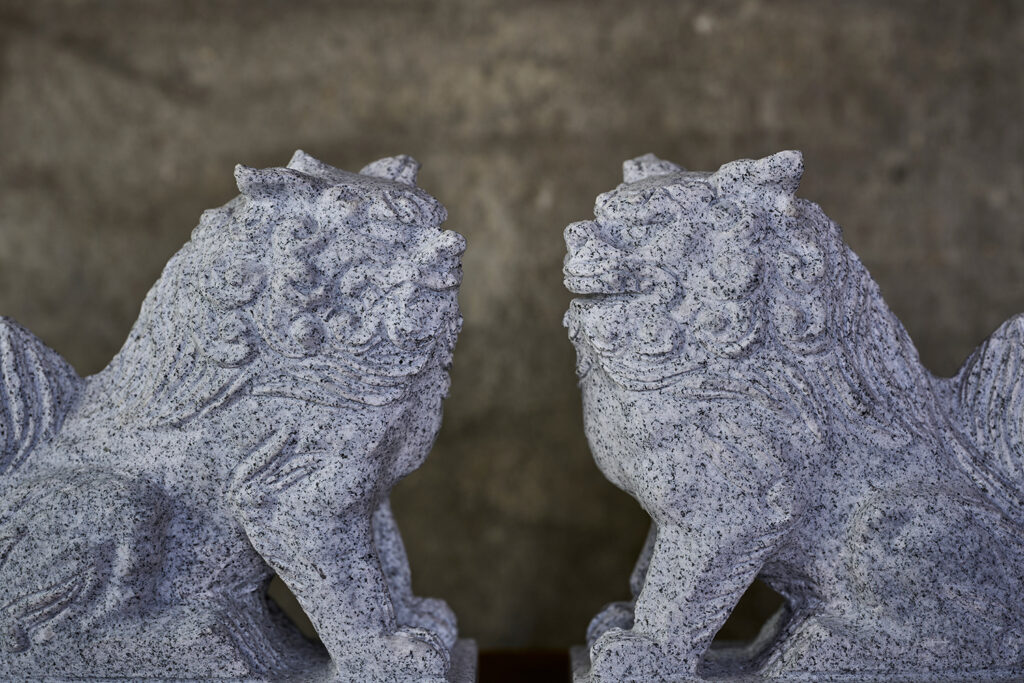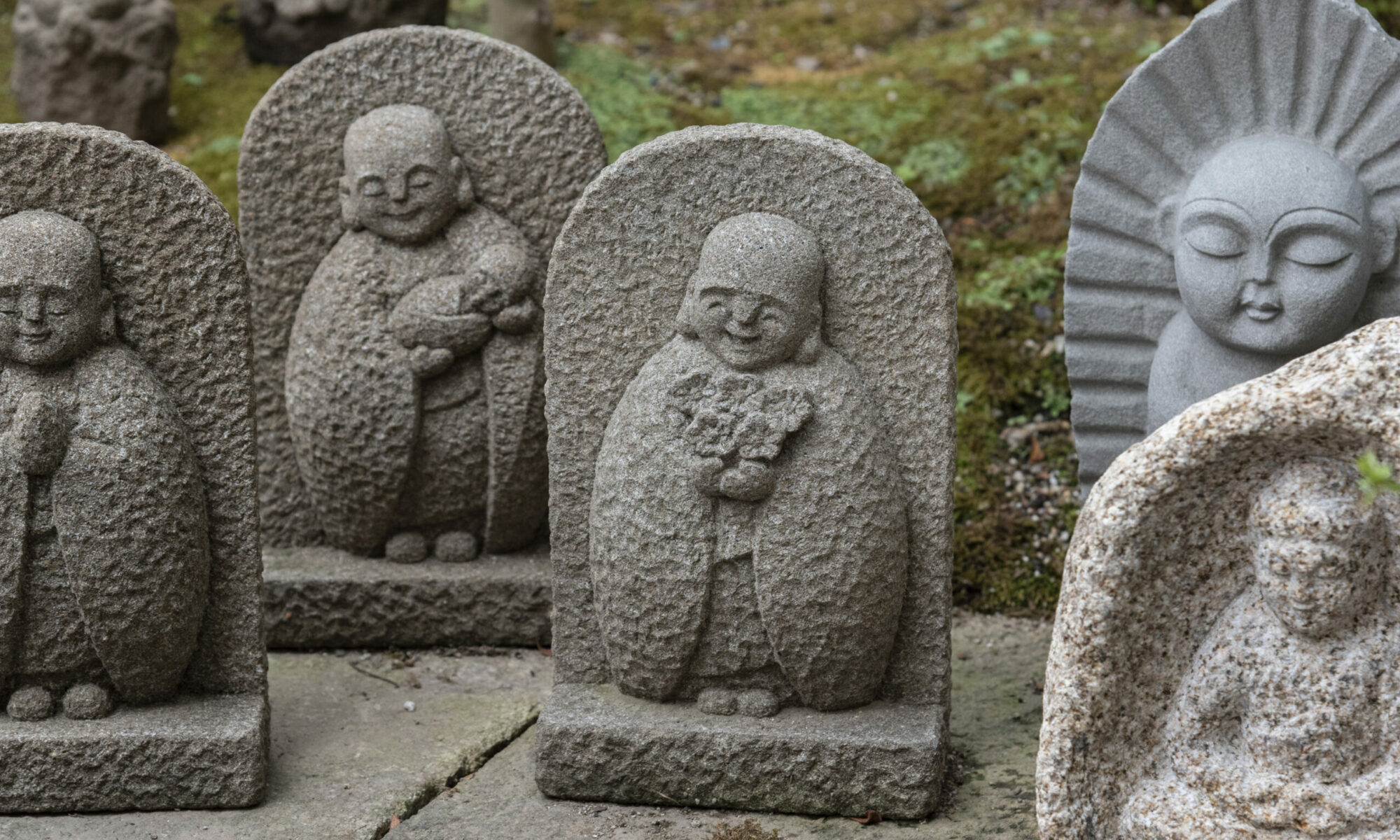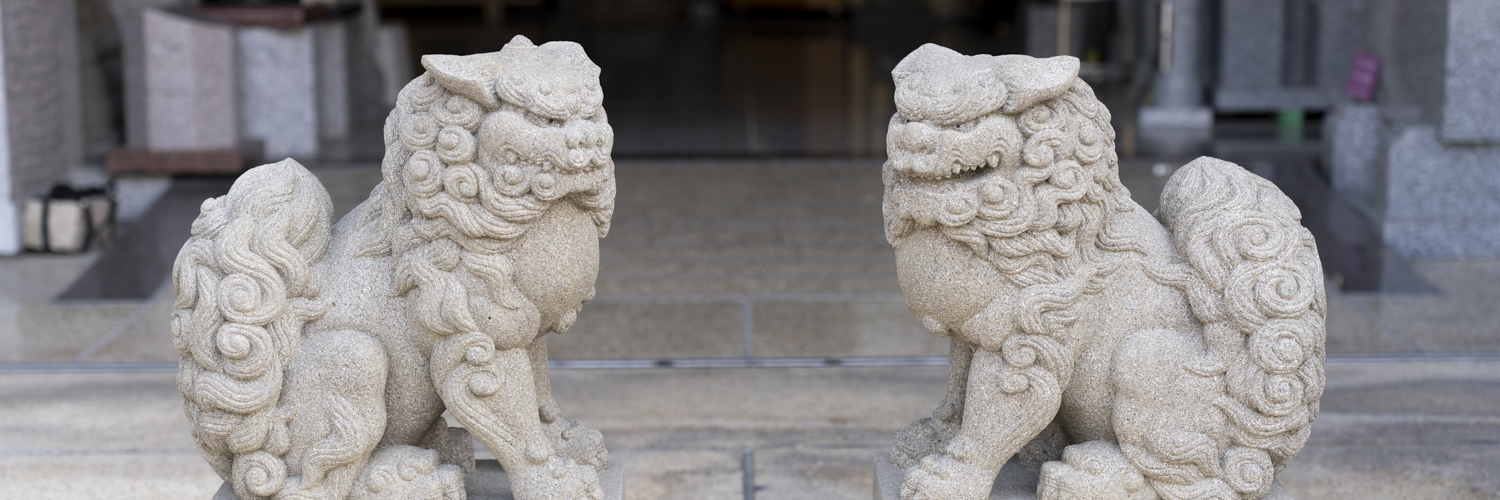Komainu (狛犬), often referred to as lion-dogs in English, are paired statues of lion-like creatures traditionally placed at the entrances of shrines to serve as protectors. In today’s blog, we’ll explore the rich history and cultural significance of these majestic guardians.
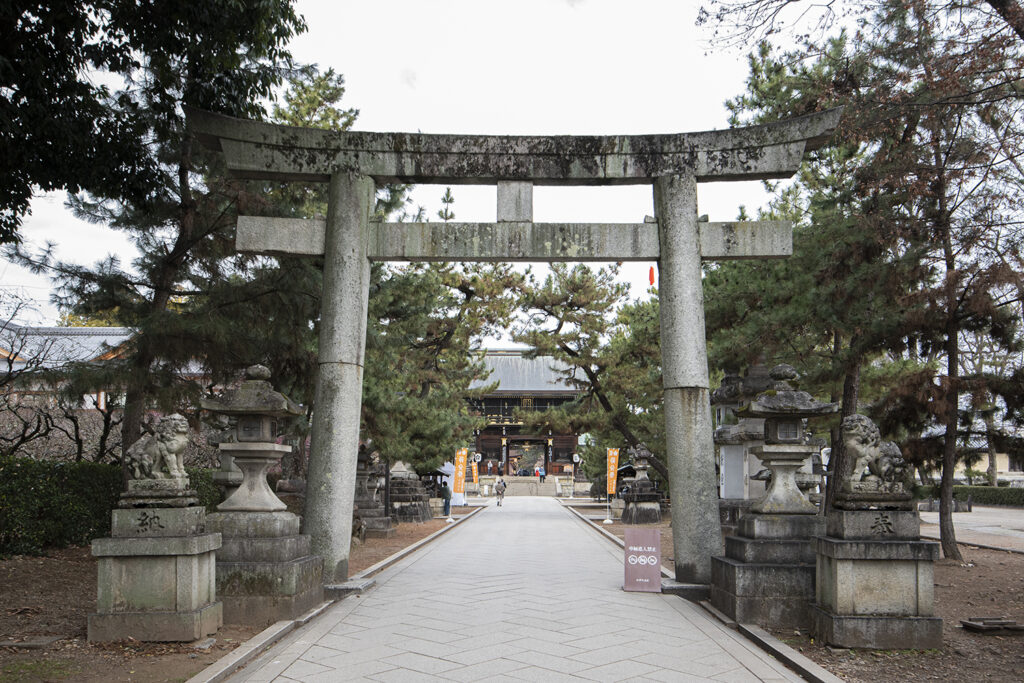
Origin
In Asian culture, lions have long been believed to possess the power to ward off evil, which made them popular as guardians of gates and doors. The origins of Komainu can be traced back to India, the birthplace of Buddhism, where lions were seen as symbols of protection. Through the ancient trade routes, including the Silk Road, the concept of lion guardians traveled to China, Korea, and eventually Japan.
Evolution in Japan
The term “Komainu” is thought by some to derive from “Koma” (高麗), the Japanese name for the ancient Korean kingdom of Goryeo, suggesting that the statues may have been introduced to Japan through Korea. Others believe Japanese envoys brought the concept directly from China during the Tang Dynasty. While the exact origins remain uncertain, it is clear that the design of Komainu has evolved uniquely in Japan.
During the Nara period (710–794), Komainu began appearing in pairs. Notably, these pairs feature distinct expressions: the Komainu on the right typically has an open mouth, while the one on the left has a closed mouth. This design mirrors the Nio guardians at Buddhist temple gates, who are depicted making the “A” and “Un” sounds—the Japanese phonetic representation of the sacred Sanskrit sound “Om”— symbolizing the beginning and end of all things in Buddhist tradition.
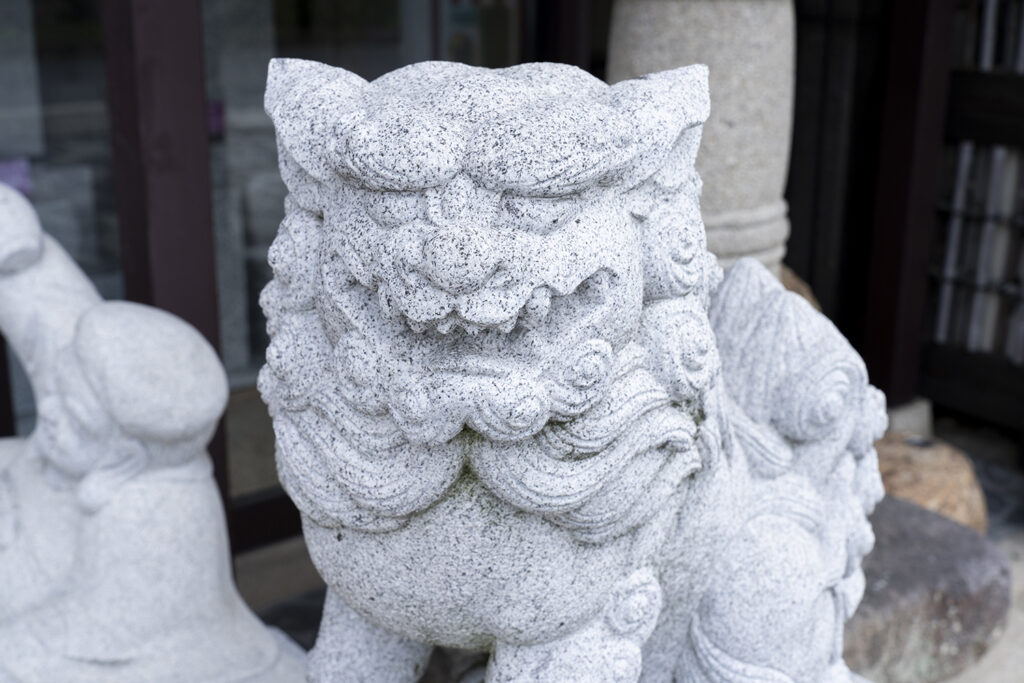
Protector of the People
In the Heian period (794–1185), Komainu were often made of wood and placed inside the prayer halls of Shinto shrines. However, during the Kamakura period (1185–1333), they were gradually moved outside the halls to protect against Japan’s harsh weather. This shift led to a change in materials, with stone becoming the preferred choice for durability.
Interestingly, not all Komainu follow the traditional lion-dog design. From the Edo period (1603–1868), other animals, such as boars, tigers, dragons, and foxes, began appearing as guardians. Whether placed in Shinto shrines or Buddhist temples, these mythical creatures continue to symbolize the protection of people’s lives and happiness.
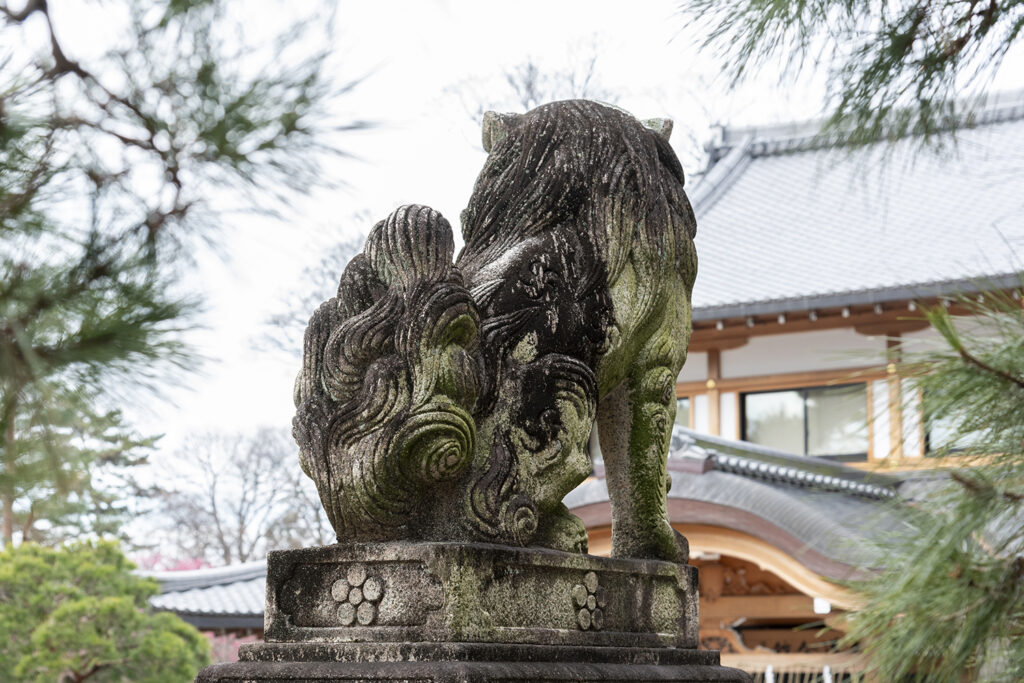
ISHIMO Design
Among the various styles of Komainu, the Ishimo-style stands out as a Kyoto-associated design created by the third-generation stonemason Yoshimura Moemon. The Ishimo style is characterized by powerful legs, expressive faces, and dynamic, swirling tails. These exquisite sculptures, marked with the artisan’s name “Ishiku Moemon,” can be admired at iconic locations such as Kitano Tenmangu Shrine, Shikichi Shrine, Kamigoryo Shrine, and Shimogoryo Shrine.
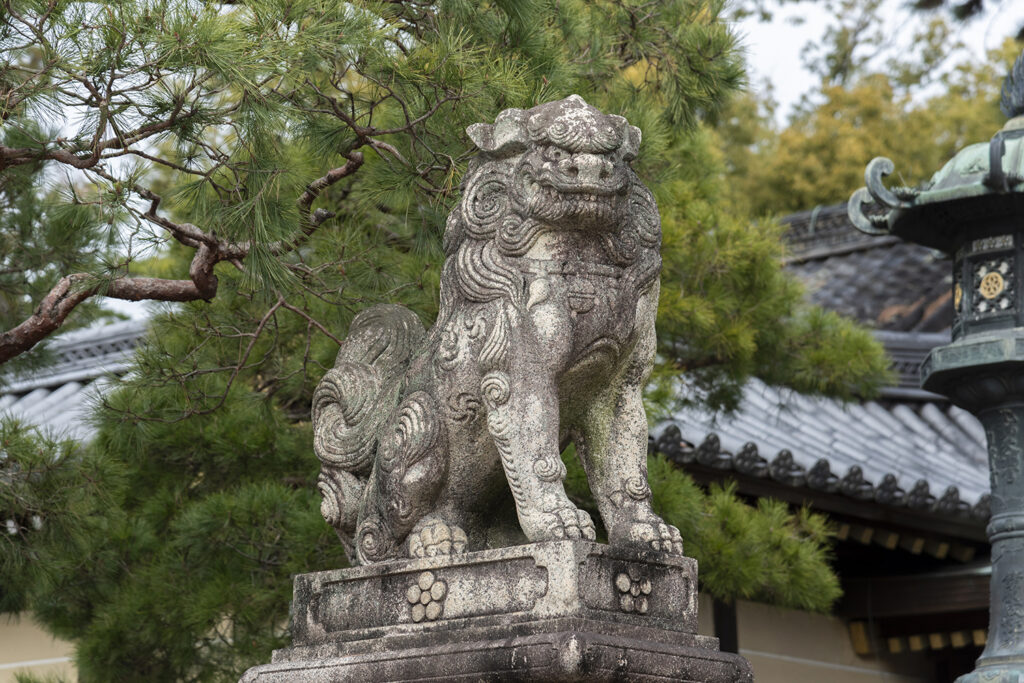
Custom Made
Recently, we have been receiving requests from ordinary people to make Komainu for the entrance or in their rooms of their homes. A stonemason in Japan will hand-carve your very own Komainu based on the size and design you have in mind. This is recommended for those who want to create their own unique Komainu or for those looking for a more authentic one. Please feel free to contact us.
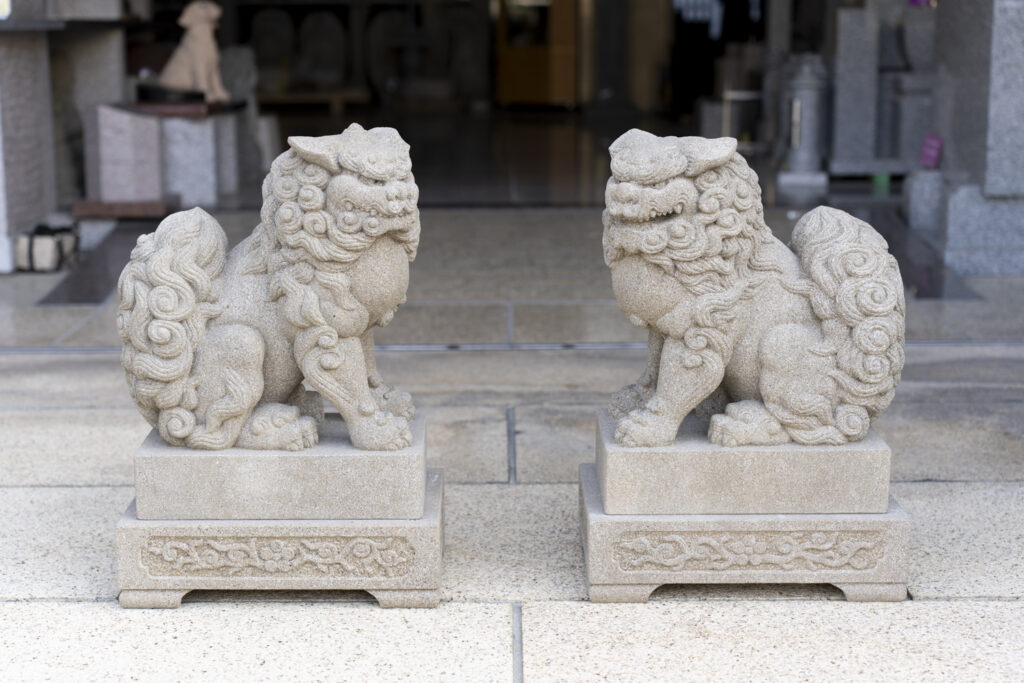
At ISHIMO, we craft smaller versions of these powerful creatures, making them perfect for placement at entrances, beside doors, in inauspicious directions, or at household Shinto altars. They are ideal as housewarming gifts, for grand openings, or as meaningful presents for loved ones. Explore our online shop to bring the spirit of Komainu into your life!
